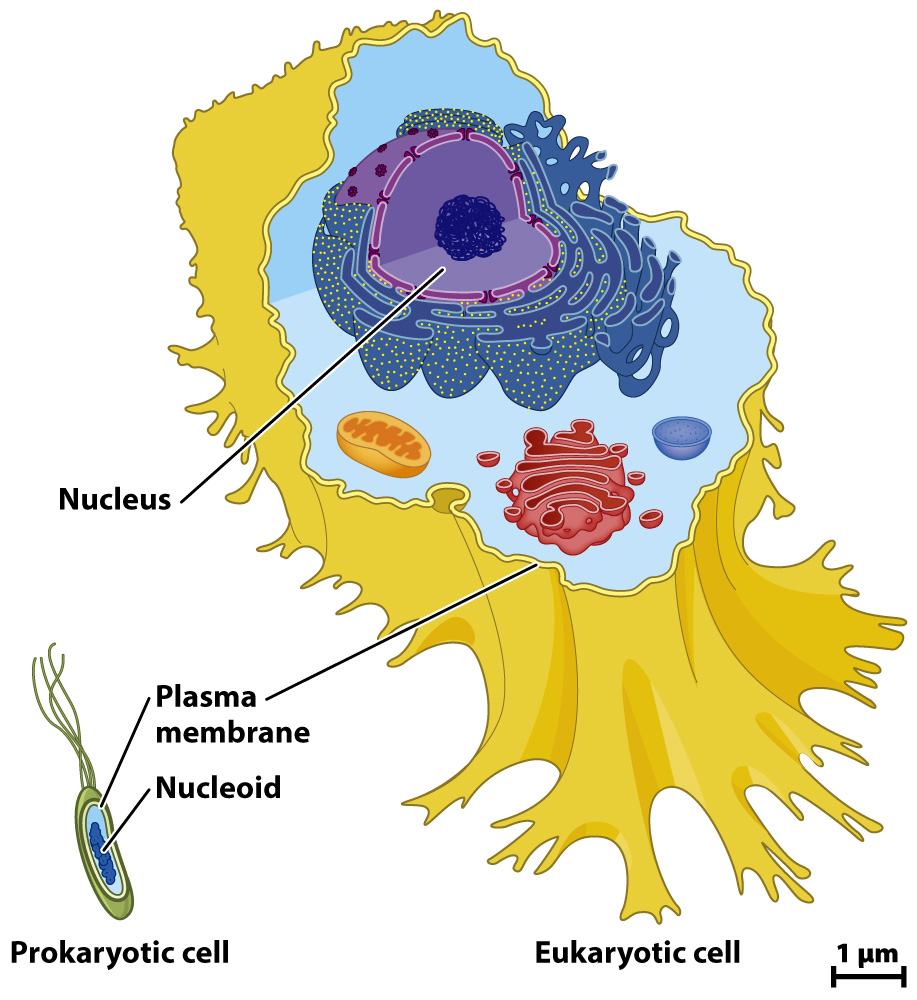Eukaryotes and prokaryotes differ in internal organization.
101
All cells have a plasma membrane and contain genetic material. In some cells, the genetic material is housed in a membrane-

There are other differences between prokaryotes and eukaryotes. For example, we saw in Chapter 3 that promoter recognition during transcription is different in prokaryotes and eukaryotes. In addition, there are differences in the types of lipid that make up their cell membranes. In mammals, as we have seen, cholesterol is present in cell membranes. Cholesterol belongs to a group of chemical compounds known as sterols, which are molecules containing a hydroxyl group attached to a four-
In spite of all of these and other differences between prokaryotes and eukaryotes, it is the absence or presence of a nucleus that defines the two groups. However, from an evolutionary perspective, archaeons and eukaryotes are more closely related to each other than either are to bacteria. For example, archaeons share with eukaryotes many genes involved in transcription and translation, and DNA is packaged with histones in both groups.